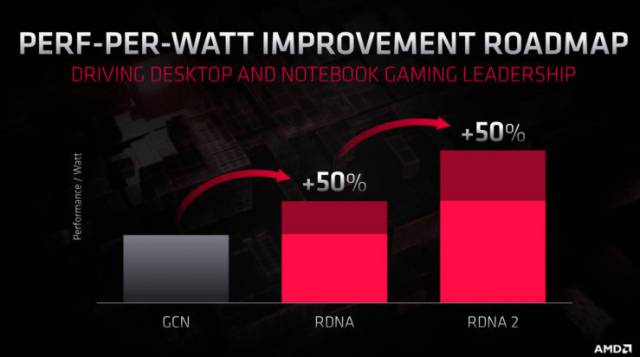
The new RDNA 2 graphic architecture represents this leap for the two new generation consoles.
AMD has presented new interesting data about its RDNA 2 architecture, from which both PS5 and Xbox Series X will be nurtured. The company has specified that performance will be multiplied with respect to its predecessors. As he explained in the 2020 financial report, the jump from RDNA 2 to RDNA 1 is the same as the GCN architecture to this, therefore, a 50% direct improvement. The consoles of the present generation are based on GCN architecture, which will mean a 100% performance jump per watt. Although so far only Xbox Series X with RDNA 2 architecture was confirmed and it was speculated that PS5 would stay in RDNA, AMD itself talks about architecture for "consoles", in the plural, and also talks about Ray Tracing confirmed on consoles, something that It will be powered by hardware and is linked to RDNA 2, not the previous architecture:
"We have developed a new hardware-accelerated Ray Tracing as part of RDNA 2, a common architecture used in next-generation consoles that will allow us to greatly simplify the content to develop in one and adapt it to the other." White and bottled that this technology and architecture will be on both platforms.

Among other announcements made by AMD, it confirms the compatibility of its cards with Variable Rate Shading (VRS), technology that Phil Spencer already announced for Xbox Series X in the console details of a few days ago and that should allow optimizing the frames by second. To all this, add that AMD has again confirmed that RDNA 2 GPUs will be available at the end of the year, therefore coinciding with the output of the consoles.
Mobile GPU for laptops with this architecture and with the intention of competing with the NVIDIA Super range have also been announced, but to see these pieces will have to wait for next year.
